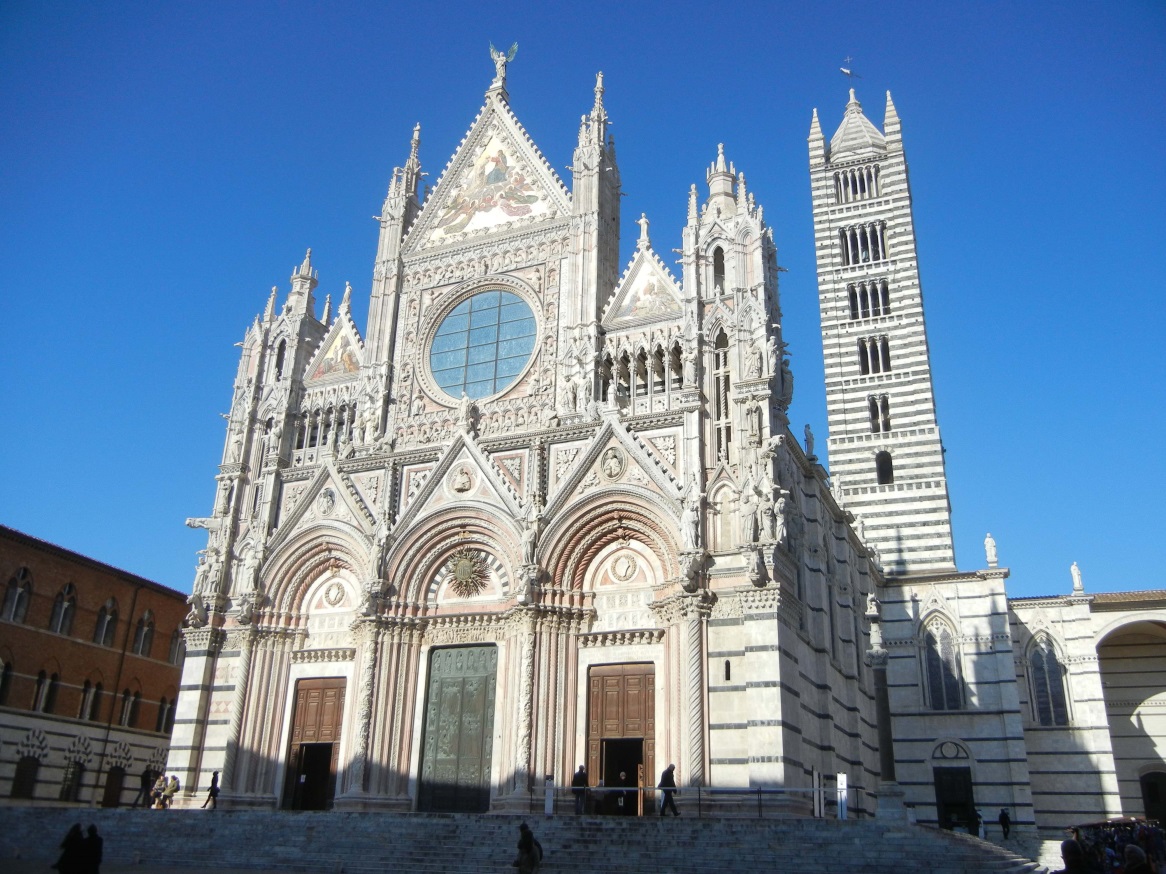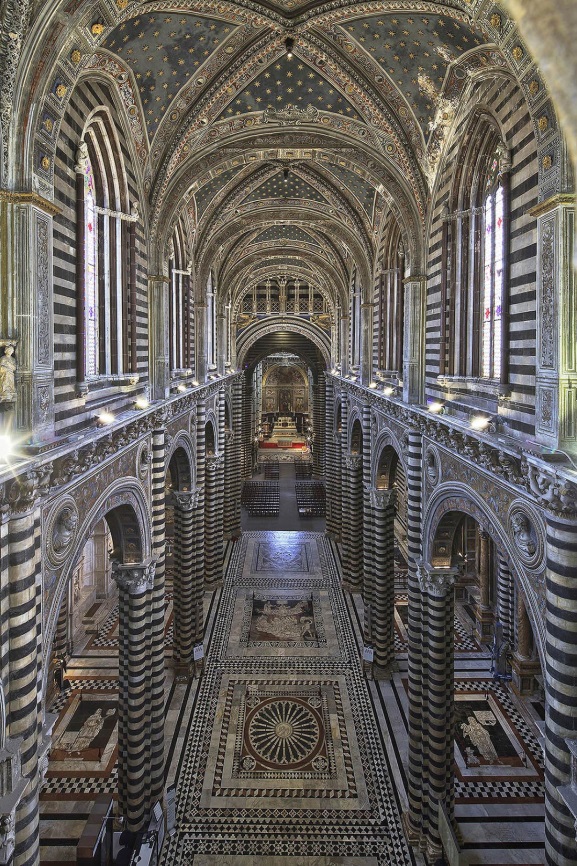
Siena is a city in Tuscany, Italy. It is the capital of the province of Siena. The historic centre of Siena has been declared by UNESCO a World Heritage Site. It is one of the nation’s most visited tourist attractions, with over 163,000 international arrivals in 2008. Siena is famous for its cuisine, art, museums, medieval cityscape and the Palio, a horse race held twice a year.
According to local legend, Siena was founded by Senius and Aschius, two sons of Remus and thus nephews of Romulus, after whom Rome was named. Supposedly after their father’s murder by Romulus, they fled Rome, taking with them the statue of the she-wolf suckling the infants (Capitoline Wolf), thus appropriating that symbol for the town. Additionally they rode white and black horses, giving rise to the Balzana, or coat of arms of Siena with a white band atop a dark band. Some claim the name Siena derives from Senius. Other etymologies derive the name from the Etruscan family name Saina, the Roman family name Saenii, or the Latin word senex “old” or its derived form seneo “to be old”.
The Palio di Siena is a traditional medieval horse race run around the Piazza del Campo twice each year, on 2 July and 16 August. The event is attended by large crowds, and is widely televised. Seventeen Contrade (which are city neighbourhoods originally formed as battalions for the city’s defence) vie for the trophy: a painted banner, or Palio bearing an image of the Blessed Virgin Mary. For each race a new Palio is commissioned by well-known artists and Palios won over many years can often be seen in the local Contrade museum. During each Palio period, the city is decked out in lamps and flags bearing the Contrade colours.
Over the centuries, Siena has had a rich tradition of arts and artists. The list of artists from the Sienese School include Duccio and his student Simone Martini, Pietro Lorenzetti and Martino di Bartolomeo. A number of well known works of Renaissance and High Renaissance art still remain in galleries or churches in Siena.
The Church of San Domenico contains art by Guido da Siena, dating to mid-13th century. Duccio’s Maestà which was commissioned by the City of Siena in 1308 was instrumental in leading Italian painting away from the hieratic representations of Byzantine art and directing it towards more direct presentations of reality. And his Madonna and Child with Saintspolyptych, painted between 1311 and 1318 remains at the city’s Pinacoteca Nazionale.



